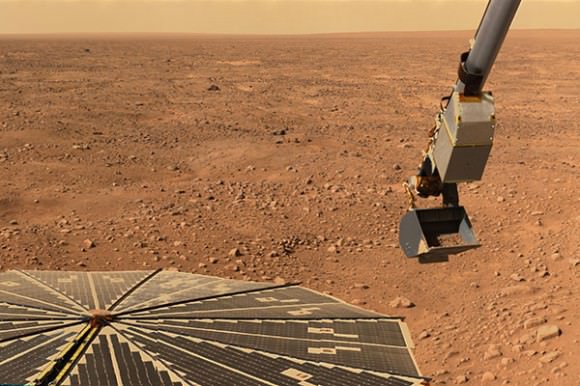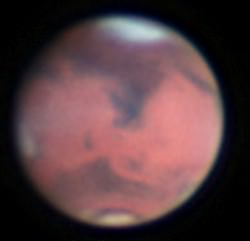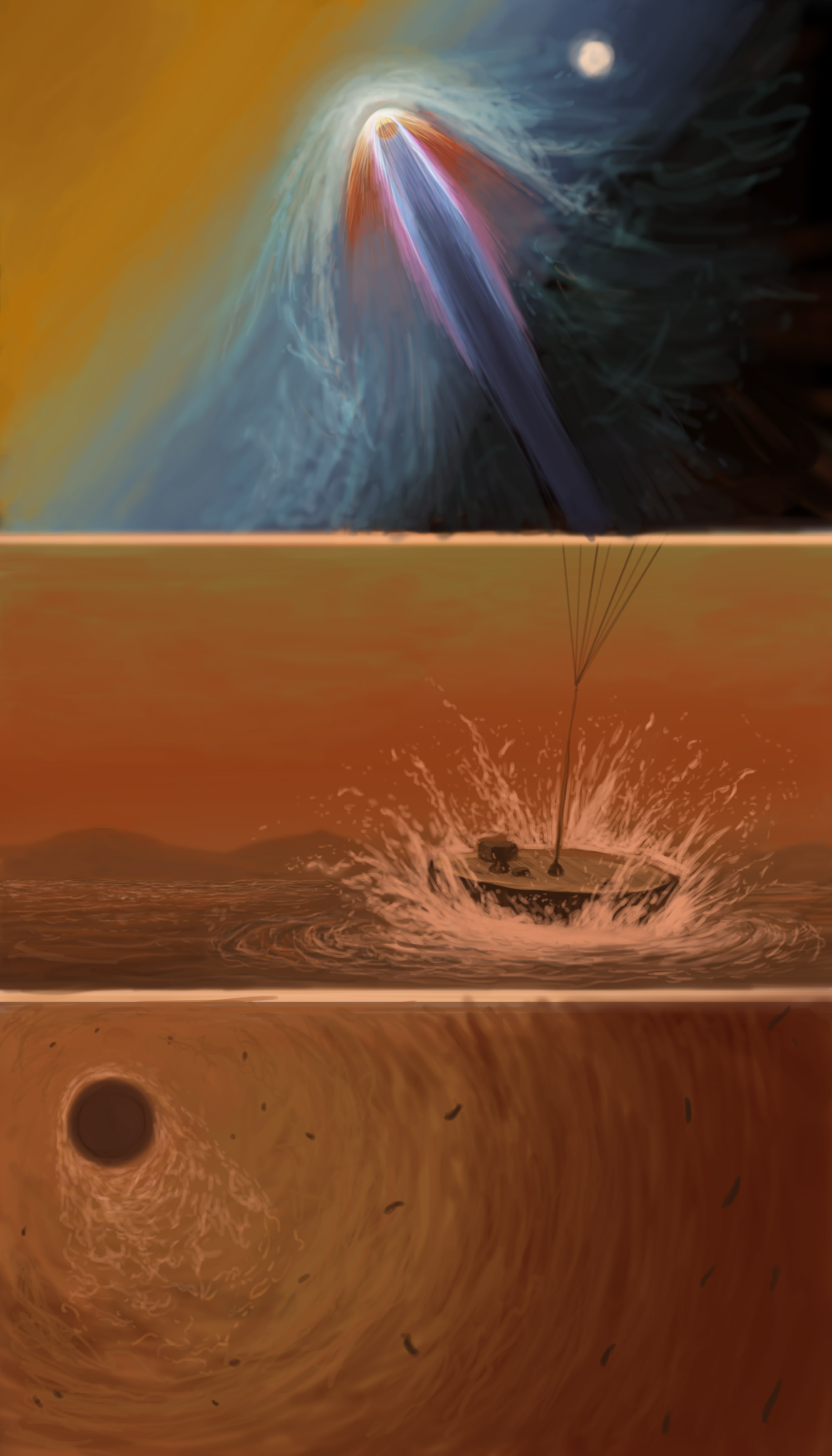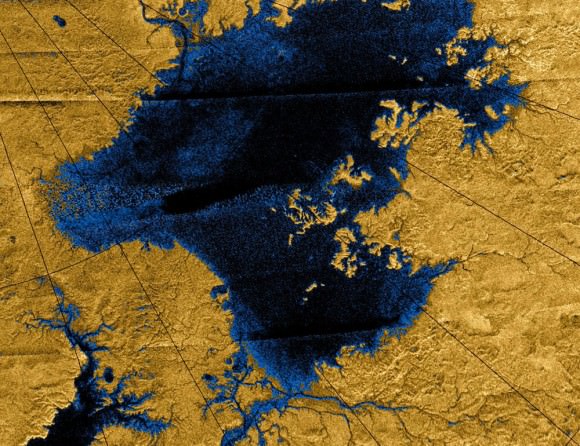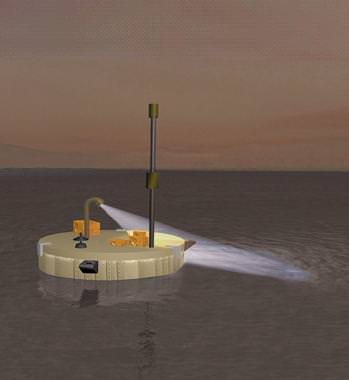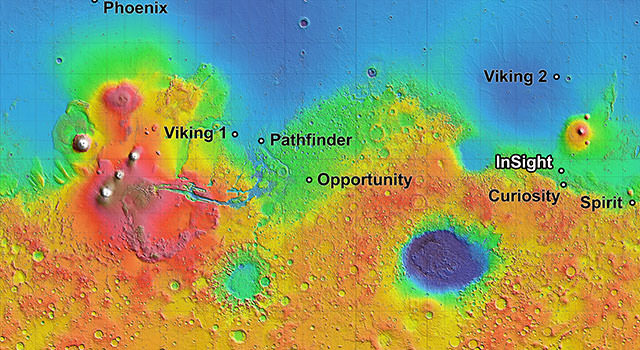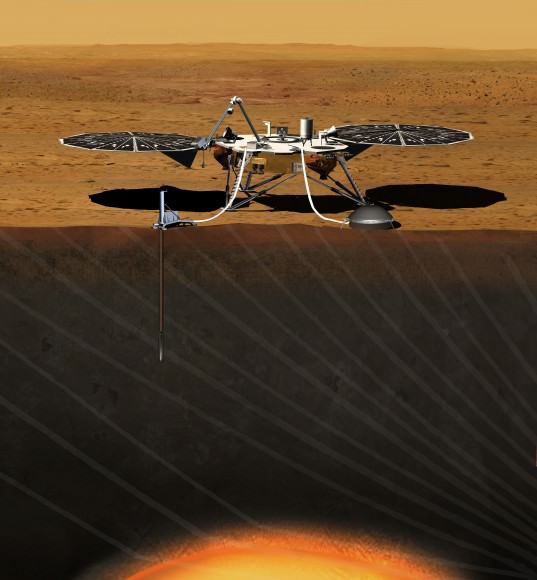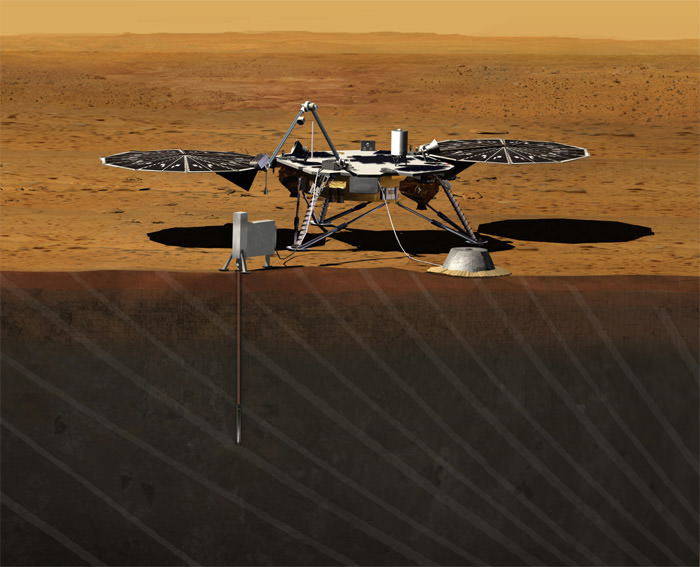Would you like to send your great idea for a research experiment to Mars and are searching for a method of transport?
The Mars One non-profit foundation that’s seeking settlers for a one-way trip to establish a permanent human colony on the Red Planet starting in the mid-2020’s, is now soliciting science and marketing proposals in a worldwide competition for their unmanned forerunner mission – the 2018 Mars One technology demonstration lander.
The Dutch-based Mars One team announced this week that they are seeking requests for proposals for seven payloads that would launch in August 2018 on humanities first ever privately financed robotic Red Planet lander.
Mars One hopes that the 2018 lander experiments will set the stage for liftoff of the first human colonists in 2024. Crews of four will depart every two years.
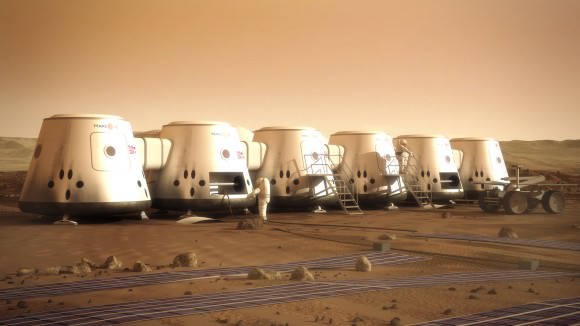
The 2018 lander structure would be based on NASA’s highly successful 2007 Phoenix Mars lander – built by Lockheed Martin – which discovered and dug into water ice buried just inches beneath the topsoil in the northern polar regions of the Red Planet.
Mars One has contracted with Lockheed Martin to build the new 2018 lander.
Lockheed is also currently assembling another Phoenix-like lander for NASA named InSight which is scheduled to blast off for Mars in 2016.
The payloads being offered fall under three categories; four science demonstration payloads, a single university science experiment, and two payload spaces up for sale to the highest bidder for science or marketing or “anything in between.”
The science payload competition is open to anyone including universities, research bodies, and companies from around the world.
“Previously, the only payloads that have landed on Mars are those which NASA has selected,” said Bas Lansdorp, Co-founder & CEO of Mars One, in a statement. “We want to open up the opportunity to the entire world to participate in our mission to Mars by sending a certain payload to the surface of Mars.”
The four science demonstration payloads will test some of the technologies critical for establishing the future human settlement. They include soil acquisition experiments to extract water from the Martian soil into a useable form to test technologies for future human colonists; a thin film solar panel to demonstrate power production; and a camera system working in combination with a Mars-synchronous communications satellite to take a ‘real time’ look on Mars.
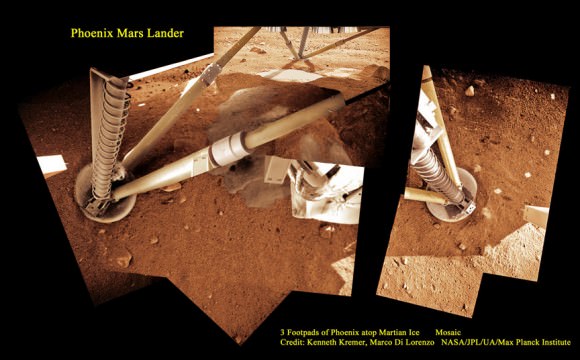
Phoenix thrusters blasted away Martian soil and exposed water ice. Proposed Mars One 2018 mission will build a new Phoenix-like lander from scratch to test technologies for extracting water into a useable form for future human colonists. NASA’s InSight 2016 mission will build a new Phoenix-like lander to peer deep into the Red Planet and investigate the nature and size of the mysterious Martian core. Credit: Ken Kremer, Marco Di Lorenzo, Phoenix Mission, NASA/JPL/UA/Max Planck Institute
The single University competition payload is open to universities worldwide and “can include scientific experiments, technology demonstrations or any other exciting idea.” Click here for – submission information.
Furthermore two of the payloads are for sale “to the highest bidder” says Mars One in a statement and request for proposals document.
The payloads for sale “can take the form of scientific experiments, technology demonstrations, marketing and publicity campaigns, or any other suggested payload,” says Mars One.
“We are opening our doors to the scientific community in order to source the best ideas from around the world,” said Arno Wielders, co-founder and chief technical officer of Mars One.
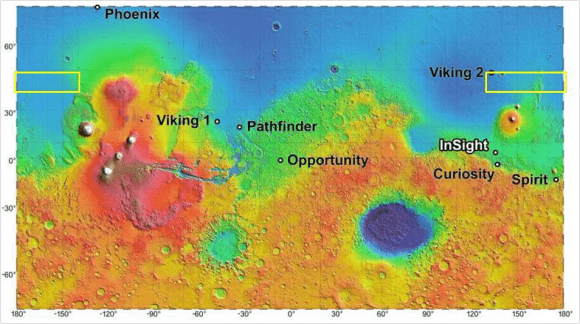
“The ideas that are adopted will not only be used on the lander in 2018, but will quite possibly provide the foundation for the first human colony on Mars. For anyone motivated by human exploration, there can be no greater honor than contributing to a manned mission to Mars.”
Click here for the Mars One 2018 Lander ‘Request for Proposals.’
Over 200,000 Earthlings applied to Mars One to become future human colonists. That list has recently been narrowed to 705.
Stay tuned here for Ken’s continuing Curiosity, Opportunity, Orion, SpaceX, Boeing, Orbital Sciences, commercial space, MAVEN, MOM, Mars and more planetary and human spaceflight news.
…………….
Learn more about NASA’s Mars missions and Orbital Sciences Antares ISS launch on July 11 from NASA Wallops, VA in July and more about SpaceX, Boeing and commercial space and more at Ken’s upcoming presentations.
July 10/11: “Antares/Cygnus ISS Launch from Virginia” & “Space mission updates”; Rodeway Inn, Chincoteague, VA, evening



